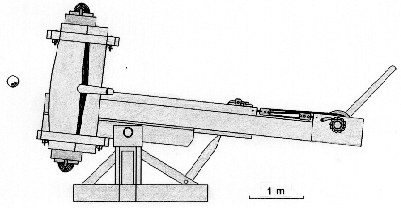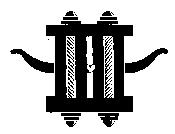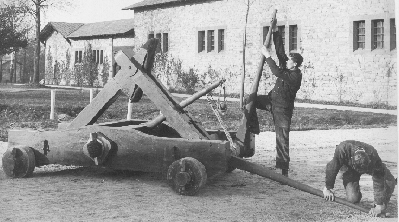
Stone-throwers were built from mid fourth century BC onward, but only after serveral stages of development the mature standard type of the palintonon appeared in the third century BC. The reconstruction sketch drawn after the text of Philon, Belopoeica shows a heavy palintonon for throwing 1/2 talent (ca. 13 kg) stone balls. The total weight of this weapon was about 3 metric tons, the weight of the elastic ropes of the two torsion springs alone ca. 330 kg. In contrast to the euthytonon the palintonon could easily be dismantled into the main components: the two torsion springs with their wooden frames, the long stock (table, ladder and slider) together with winch and pulley, also the carriage. Because of the heavy weight and the sheer size of the palintonon dismantling was indispensable, otherweise the machine could not have been transported over the often poor and narrow roads of Antiquity. The stone balls were fired generally in a flat trajectory, not in a high one as often mistakenly assumed in modern literature.
The two-armed torsion stone thrower was still employed in the early Roman Imperial period. The Roman author Vitruvius provides a description of the palintonon under the latin name ballista (X.11: De ballistarum rationibus et proportionibus).
 CATAPULTS IN GREEK AND ROMAN ANTIQUITY
CATAPULTS IN GREEK AND ROMAN ANTIQUITY
